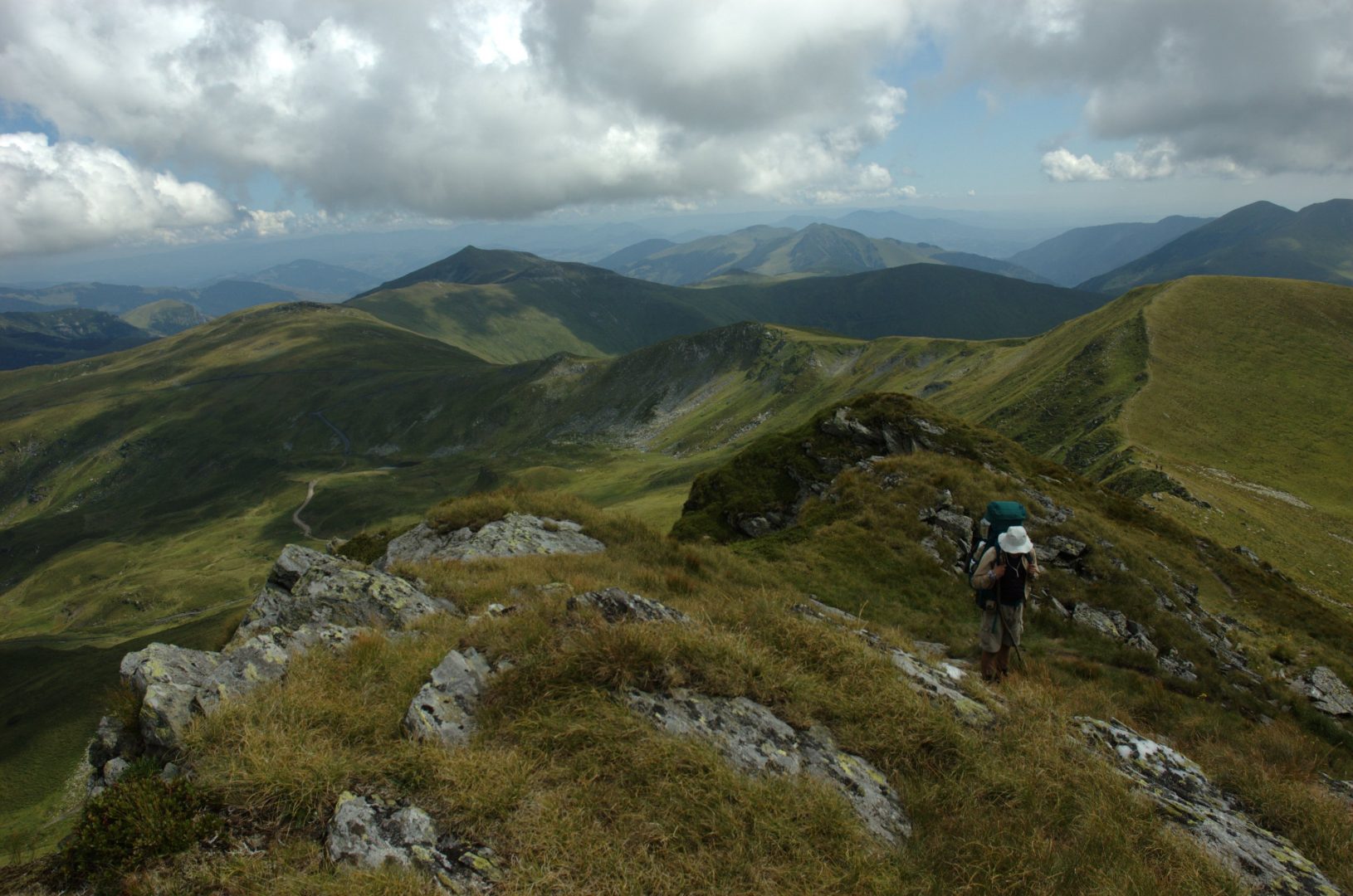A summer trip to the somehow exceptional Maramureș in three parts. A trek through the Munții Rodnei, thorough sightseeing in the Maramureș valley proper, and a trek along the border in the Munții Maramureșului. Romania, July/August 2011.
Maramureș seems to be a remote valley, borderlands somewhere in the middle of the Carpathians, although it is not so isolated and was not so in the past. The surrounding mountains seem to be huge and impenetrable — but actually they are not, roads, railways, following old trade routes, even a narrow gauge train line to the middle of the forest. Unspoiled nature? Not quite so, this is the very scene of a drastic ecological catastrophe with mining tailings flowing down the river… Provincial backwater? Not necessarily — once a center of international smuggling operations. And yes, a paradise for lovers of wooden folk architecture with all that old churches and farms — but you have to filter out the ugliest socialist techno-brutal architecture here or there. Yes, a refuge of the authentic folk culture, but being already sold to tourists.
On the main ridge of Munții Maramureșului, once considered the true navel of the deepest Carpathian forests, the whole majesty of the sistiema, the Soviet border installations with a broad belt of no-go earth, barbed wire and even watchtowers is still maintained by the Ukrainians. In the Romanian side valleys there is much too much of the industrial forest exploitation, although the nearer to the boundary the more unspoiled the landscape looks like, at least until you hit the border fence.
But anyway, for many Maramureș still is a symbol of the most typical place to go if you want to learn how the true Carpathians look like. And also the Rodna mountains, separating Maramureș from Transilvania, are considered as the most typical landscape for these mountains as a whole. And this is very, very true.
